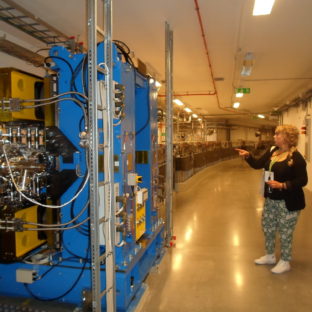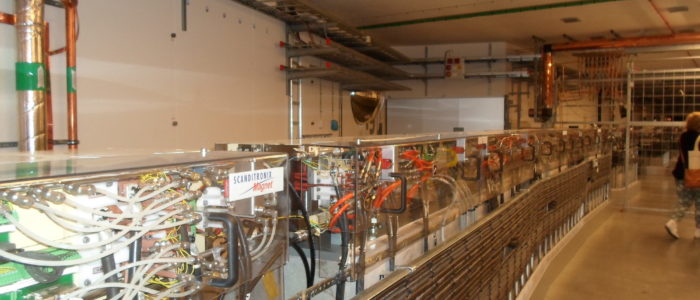A very large step forward for Swedish research was taken in June with inauguration of the synchrotron laboratory MAX IV in the Skåne region. An investment in the class of several billions of Swedish crowns will hopefully attract many of the best heads in Europe, and contribute to many new step forward for nearly all parts of research.
 A Common Effort.
A Common Effort.
Centrally placed in the Skåne region south in Sweden – the facilities are near the large universities of Lund and Copenhagen and easily accessible for the whole of Northern Europe. This is also partly the idea, the modern facility is supposed to attract a much larger crowd of people around the world than the region of Sweden and Denmark. It is expected that more than 2000 scientists will carry out experiments within the facility every year. However, Max IV is not only a Swedish project; Denmark, Finland and Estonia also share large parts of the Investment.
What Can it be Used For
Nearly all fields of science may benefit from the facility. The MAX IV operates in the wavelengths between ultraviolet and gamma rays, thus, provides possibilities to examine atoms and atoms nucleus. Researchers in areas such as life science and biology, applied material chemistry, chemistry, physics, geology and environment, archaeology, amongst others, will benefit from the research facility.
Distributed around the storage ring, there are laboratories for a series of scientific tasks. Today, 14 laboratories are financed, but fully developed, the laboratory can have 26-28 laboratories spread around the linear accelerator and the two storage rings. To manage the facility and support the visiting scientists, about 250 people are expected to be employed.
Space related activities will also benefit from facilities. In the battle to reduce weight-, size-, and energy consumption, the space community must lead the way in terms of providing new technology and material development. The MAX IV laboratory will therefore likely be a laboratory that can bring about the necessary changes in Technology.
In the introduction for MAX IV, two fields was pointed out; solar cells with higher effectiveness to a competitive price, and the hunt for the required material in the future.

Sara Thorin, Project Leader for the Linac Accelerrator, explain about the complicated installations.
More Effective Solar Cells
It is well known that solar cells with gallium arsenide is much more effective than the traditional silicon cells. However, the material is very expensive and is therefore only used for special tasks such as solar supply for satellites and similar Devices.
Through tests in the laboratory a Swedish company has developed a method to produce solar cells based on gallium arsenide at a competitive price. The equipment at MAX IV Laboratory provided the company possibilities to study the material in completely new ways.
New Materials
Another type pointed out is developing new materials. The carbon based Graphene is possibly one of the most promising steps on the way to find a super material, the lightest material known today. It is 100-300 times stronger than steel, has very high tensile stiffness, very high conductivity and, based on carbon, accessible raw material is nearly unlimited.
A very promised material where MAX IV has played a large role in the research and developing for a Swedish Company.
IDEON – Where Ideas Become Products.
Research is one side of the activities. Transferring the results into practical applications is another. To further develop the result of research to commercial products, the University of Lund and the Lund Municipally have established the Ideon Science Park, in close connection to the education and research facilities.
Ideon Science Park is Scandinavia’s and one of Europe’s most successful meeting places for visionaries, entrepreneurs and for venture capital. At present, Ideon has 120,000 square meters of office space and the about 350 companies operating here, employing more than 2,700 people. Ideon was started for the purpose of creating successful companies from the enormous wealth of knowledge and ideas that existed – and still exist – within Lund University. This vision was realized and, over the years, a long list of visionary companies have developed at Ideon.
During its first 28 years, more than 900 companies have operated at Ideon. More than seventy percent of Ideon companies have, over the years had some kind of connection with Lund University. There are now about 330 companies with a total of 2.500 employees at Ideon Science Park.
The Skåne Region
The region that covers the Southern Sweden and the eastern part of Denmark is already regarded as a “research area” and with the completion of the European Spallation Source (ESS) in a few years; this will possibly become the main research area in northern Europe.
The internal communication in the region is very good as the national border between Sweden and Denmark is open and an extensive collaboration across the Øresund strait already exists.
Featured photo:
A part of the Storage Ring. All photos: NordicSpace.


